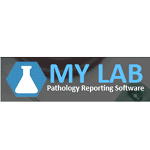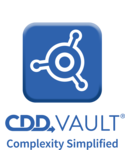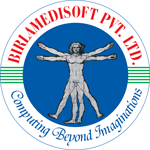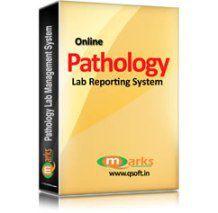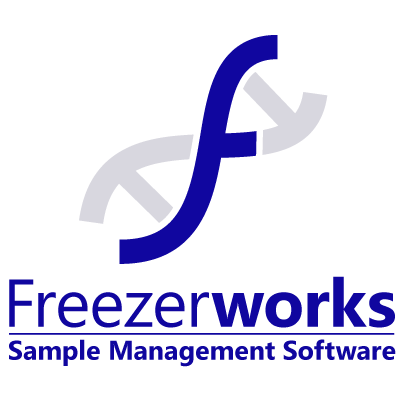Yes, most medical lab software is designed to be accessible from numerous devices and platforms. This means you can use the software on your desktop, laptop, tablet, or smartphone, whether it runs Windows, Mac, or a mobile operating system. This enables greater simplicity and flexibility in controlling lab processes, obtaining patient information, and exchanging data with colleagues. It also allows for seamless communication and collaboration across departments and regions.
List of 20 Best Medical Lab Software
L7 Informatics is a Lab Management solution specifically for life sciences and healthcare enterprises. With its robust features for sample and inventory management, workflow automation, and predictive analysis, L7 Informatics facilitates seamless dat...Read More L7 Informatics
My Lab is a software for medical laboratories. Ideal for SMEs, Enterprises, and Agencies, My Lab provides a comprehensive solution for calibration management, lab instrument integration, sample tracking, and lab order management. With its all-in-one...Read More My Lab
AmpleLogic LIMS is a software that revolutionizes laboratory management by providing efficient data management, ensuring compliance, and automating workflow processes. Our advanced system seamlessly integrates with various laboratory operations, resu...Read More AmpleLogic LIMS
DoraysLab LIMS is arobust cloud-based management solution customized for medical diagnostics needs. Fully equipped with cutting-edge features, it simplifies operations for clinics, hospitals, and patients. Through its intuitive interface, labs can ea...Read More DoraysLab LIMS
CDD Vault – your one-stop solution for managing and organizing biology and chemistry data. Our platform provides seamless collaboration and secure access, along with user-friendly tools and dedicated support. Say goodbye to complex data manage...Read More CDD Vault
PathoGOLD, the complete laboratory management solution designed specifically for pathology labs. With its streamlined operations and increased productivity, this software is essential for modern diagnostic centers and labs. PathoGOLD ensures precisio...Read More PathoGOLD
Apex LIS is a laboratory information system that is tailored to the distinct requirements of various laboratory environments. With its extensive compatibility with more than 500 analyzers, customizable workflows, and advanced compliance features, Ape...Read More Apex LIS
LigoLab is a LIS & RCM platform that delivers unparalleled flexibility and productivity. Our integrated modules allow for a seamless incorporation of the entire suite of services, eliminating the need for multiple servers, hardware, or interfaces. Fr...Read More LigoLab
LabReporter XL the Pathology Reporting Software that simplifies and streamlines the reporting process for pathology, X-ray, ultrasound, and ECG results. Our all-inclusive package comes with a Patient Registration System, Lab Accounting capabilities,...Read More LabReporter XL
Experience efficient and comprehensive management of your diagnostic lab with Health Amaze is the affordable and cloud-based solution. Simplify your business operations and elevate the experience for your patients, providing them with a seamless and...Read More Health Amaze
IDOVEN is an innovative HealthTech platform headquartered in Madrid that integrates advanced artificial intelligence technology to prevent cardiac diseases, myocardial infarction, and sudden death. With its cutting-edge algorithms and digital health...Read More Idoven
Qmarks Pathology Lab Management Software is solution for all your labs operational and reporting requirements. This highly customizable software offers a user-friendly interface and can be accessed from any device, at any time. Forget long waiting ti...Read More Qmarks Pathology Lab
SIMPLEX HIMES – is the solution for managing your healthcare facility. This robust Hospital Management System offers a user-friendly interface with advanced features like Patient Management, EMR, LIS, RIS, PACS, RCM, Inventory, Billing, and Ec...Read More SIMPLEX HIMES
Polytech LIS solution for managing your laboratory. With features like Electronic Medical Records Interface, Sample Tracking, and Physician Test Panels, our advanced lab information system will streamline your lab operations and guarantee data securi...Read More Polytech LIS
CloudLIMS is a highly efficient and intuitive laboratory information management system that offers comprehensive patient data management. It includes innovative features such as electronic medical records, MIS reports, and database management, making...Read More CloudLIMS
Freezerworks is a trusted LIMs solution that has been serving the needs of biobanks, laboratories, and repositories for over 30 years. Renowned for its reliability, this software simplifies data organization and sample tracking, making it the top cho...Read More Freezerworks
CrelioHealth LIMS, a Laboratory and Radiology Information Management System, is available on both web and mobile devices. This software is built to enhance patient satisfaction, optimize lab processes through automation, and facilitate informed busin...Read More CrelioHealth LIMS
Disa Lab is a laboratory software that offers exceptional efficiency and is perfect for all types of labs. With its affordable yearly payment option and impressive performance, it has become a favored choice in the industry. This advanced software st...Read More Disa*Lab
Experience the efficiency and simplicity of Quartzy is a Lab Management System. Say goodbye to the hassle of managing lab supplies and samples, and hello to centralized management and streamlined order requests. Our user-friendly interface comes at n...Read More Quartzy
eLab is a lab software, simplifies your laboratory tasks and enhances your reporting and account management capabilities. With eLab, maintaining precise patient records and accessing reports has never been easier. Featuring over 350 pre-configured te...Read More eLab
Learn More About Medical Lab Software
- What Is Medical Lab Software?
- What Are The Recent Trends In Medical Lab Software?
- Benefits Of Using Medical Lab Software
- Important Factors To Consider While Purchasing Medical Lab Software?
- What Are The Key Features To Look For In Medical Lab Software?
- Why Do Businesses Need Medical Lab Software?
- How Much Time Is Required To Implement Medical Lab Software?
- What Is The Level Of Customization Available In Medical Lab Software?
- Which Industries Can Benefit The Most From Medical Lab Software?
- Conclusion
What Is Medical Lab Software?
Medical lab software is a sort of software that is built specifically for use in medical laboratories. It is a critical tool that enables healthcare practitioners to optimize and automate laboratory processes, resulting in more efficient, accurate, and timely patient care. Medical lab software is primarily used to manage and process laboratory test requests, collect and monitor specimens, analyze and report test results, and handle medical billing.
With the growth of technology, this program has expanded to include capabilities like test result data integration, inventory management, quality control, and compliance tracking. One of the key advantages of medical lab software is its potential to increase the quality and reliability of test results. By automating the entire testing process, it eliminates human error and reduces the possibility of misinterpretation of results, resulting in better patient outcomes.
Furthermore, medical lab software facilitates the management and organization of vast amounts of data, making it easier to track and monitor patient health information. This is especially useful in hospitals where a large number of patients are being treated at once. Another important feature of medical lab software is the ability to streamline procedures and increase efficiency.
By automating operations like sample labeling, data entry, and report preparation, staff may focus on more important duties, saving time and resources. When deciding which medical lab software to purchase, check for features such as compatibility with existing systems, convenience of use, data security, and strong customer support. Furthermore, the program should adhere to applicable standards, such as HIPAA, to maintain patient data privacy and confidentiality.
What Are The Recent Trends In Medical Lab Software?
The field of medical lab software has evolved fast in recent years, keeping up with technological improvements and the ever-increasing demand for efficient and accurate laboratory testing. As a buyer, you must stay up to date on the latest trends in medical lab software in order to make an informed decision regarding your laboratory's requirements. So, what are the current trends in medical laboratory software?
Let's have a look.
1. Cloud-Based Solutions: With the rise of cloud technology, many medical labs are turning to cloud-based solutions to manage their data and operations. These solutions provide various advantages, including accessibility from any device, cost-effectiveness, and increased security.
2. Automation And Integration: Over the last few years, the integration of laboratory instruments with software systems has grown increasingly common. This enables automatic data transfer, which reduces human error while enhancing lab efficiency. Furthermore, enhanced integration enables the smooth integration of patient data and findings into electronic health record (EHR) systems.
3. Artificial Intelligence (AI): AI is altering the medical lab software landscape by enabling intelligent data analysis and interpretation. This technique has the potential to drastically improve turnaround times, eliminate errors, and increase overall laboratory efficiency. AI-enabled software has the potential to help with disease diagnosis and therapy recommendations.
4. Mobile Applications: Mobile apps have become an indispensable tool for many medical labs, allowing employees to access patient data, test results, and reports on the move. The demand for mobile-friendly medical lab software is increasing as people use smartphones and tablets more frequently.
5. Tailored Medicine: The concept of tailored medicine is gaining popularity in the medical field, and lab software is not immune. With the ability to evaluate genetic data and deliver specific treatment regimens, medical labs are incorporating personalized medicine into their workflows.
6. Data Analysis: With the increasing volume of data created by medical labs, efficient data administration and analysis has become critical. Data analytics technologies are being integrated into lab software to offer information on lab performance, quality control, and turnaround times.
Benefits Of Using Medical Lab Software
Introduction: Medical lab software is a strong instrument that has transformed the way laboratory operations are handled and carried out. This software automates a variety of processes, including patient management, sample monitoring, result reporting, and inventory management, making it an invaluable asset to any medical lab.
In this buyer's guide, we'll go over the benefits of using medical lab software so you can make an informed decision when buying one for your lab.
1. Improved Efficiency And Productivity: One of the primary benefits of adopting medical lab software is a significant boost in efficiency and productivity. The software eliminates the need for manual data entry, lowering the risk of human error. This also frees up lab professionals' time, allowing them to focus on other important activities and produce faster and more reliable findings. This software has a user-friendly interface and speeds up the entire lab procedure, resulting in short turnaround times.
2. Improved Data Management: Medical lab software has comprehensive data management capabilities, allowing labs to manage massive amounts of data without difficulty. It keeps patient information, test results, and other critical data secure and organized. This makes it easier to retrieve and analyze data, allowing labs to spot trends and patterns, resulting in better decision-making and patient outcomes. It also maintains rigorous respect to data privacy rules, which protect sensitive patient information.
3. Improved Quality Control: Manual data input and analysis are prone to mistakes, which can have serious effects in a medical laboratory. Medical lab software dramatically improves quality control by automating operations such as sample tracking, testing, and result reporting. This decreases the likelihood of human error while also ensuring test findings are accurate and consistent. The software also includes quality control mechanisms to discover and resolve any differences, which improves the overall quality of lab tests.
4. Cost And Time Savings: Medical lab software not only increases efficiency but also reduces long-term costs. Automated processes eliminate the need to hire and train new employees. It also reduces the possibility of errors, avoiding the need for retesting and conserving significant time and money. The software also provides real-time inventory management, which reduces overstocking and waste, resulting in cost savings.
5. Integration With Other Systems: A medical lab requires compatibility with other systems, which medical lab software provides. It can link smoothly with electronic health records (EHR), billing systems, and other critical systems, allowing for a smooth flow of information both within the lab and between systems. This efficiently saves time and reduces errors caused by manual data entry, resulting in accurate billing and insurance claims processing.
Important Factors To Consider While Purchasing Medical Lab Software?
When it comes to acquiring medical lab software, there are numerous key elements to consider to ensure you make the greatest option for your healthcare facility.
Whether you're planning to enhance your current system or implement a new one, keep these crucial considerations in mind:
1. Accuracy And Reliability: Medical lab software's principal duty is to produce accurate and consistent results. As a result, it is critical to select software that is known for its accuracy and consistency, as errors in test results might have major effects.
2. Compatibility: You must check that the software you are evaluating is compatible with your current equipment and devices. This will avoid compatibility difficulties and save you time and money in the long term.
3. Customization Options: Each medical lab has distinct demands and requirements, thus it is critical to select software that can be tailored to those specific needs. Look for software that allows you to customize templates, workflows, and reports to fit your lab's specific needs.
4. User-Friendly Interface: A user-friendly interface is essential for ensuring smooth and effective operation. Choose software that is intuitive and simple to use, as this will save you time and lessen the likelihood of errors caused by confusion.
5. Data Security: Medical lab software handles sensitive patient data, thus it is critical that it has strong security mechanisms in place to secure it. Look for software that includes data encryption, user access limits, and scheduled backups.
6. Integration With EMR/EHR: In today's digital world, your medical lab software must be seamlessly integrated with your electronic medical records (EMR) or electronic health records (EHR) system. This will make it easier to share patient data and avoid duplication of data entry.
7. Technical Support And Training: Medical lab software is sophisticated and requires suitable training to operate efficiently. Look for a software vendor who provides extensive training and continuous technical support to ensure that your team is comfortable and confident in utilizing the product.
8. Scalability: As your lab expands, you may need to add additional tests or expand your operations, and your software should be able to handle this. Choose software with scalability choices to avoid having to migrate to a new system in the future. By taking these criteria into account, you can make an informed selection and select a medical lab software that fulfills your facility's demands, enhances efficiency, and, ultimately, produces dependable and accurate patient results.
What Are The Key Features To Look For In Medical Lab Software?
When it comes to Medical Lab Software, there are a few critical aspects that every buyer should evaluate before making a purchase. These capabilities have the potential to significantly improve the software's efficiency and efficacy, benefiting both the entire medical lab staff and the patients they serve.
In this buyer's guide, we'll look at the essential features of Medical Lab Software and how they help you make an informed purchase.
1. Strong Data Management And Security: Medical lab software should provide a safe and user-friendly interface for handling patient data, test results, and other sensitive information. Look for features like data encryption, safe backups, user access control, and HIPAA compliance to protect sensitive data and comply with industry regulations.
2. Integration Capabilities: A good medical lab software should effortlessly connect with other systems and equipment. This includes lab analyzers, EHRs, and billing systems. Integration speeds up procedures, lowers manual entry errors, and increases data accuracy.
3. Customizable Workflows: Each medical laboratory has unique processes and workflows. As a result, it is critical to look for software that provides configurable workflows to meet the specific demands of your lab. This enables more effective work allocation, progress tracking, and improved team communication.
4. Advanced Reporting And Analytics: As the number of tests and samples in a medical lab grows, reporting and analytical capabilities in the software become increasingly important. Look for software that can provide customisable reports, track Key Performance Indicators (KPIs), and provide useful insights to help you make informed decisions.
5. Quality Control And Assurance: Quality control and assurance are critical components of any lab, and the software should include capabilities like tracking and monitoring testing equipment, flagging aberrant results, and assuring compliance with established procedures and laws.
6. User-Friendly Interface: Any software must have a user-friendly interface to ensure that all team members can utilize it easily. Look for software with an easy-to-use, intuitive interface that takes little training and enables for quick navigation.
7. Mobile Compatibility: With the growing usage of mobile devices in medical labs, it is important to have software that is mobile device compatible. This enables remote access to data and test results, boosting lab personnel's productivity and flexibility.
Why Do Businesses Need Medical Lab Software?
Running a medical laboratory requires efficiency, accuracy, and compliance to be successful. Here is where medical lab software comes into play. It is a comprehensive system developed to help laboratories expedite processes, keep accurate data, and assure regulatory compliance. One of the primary reasons that organizations require medical lab software is to improve efficiency.
Manual data entry and record keeping can be time-consuming and subject to human mistake. at a software system in place, lab staff can easily enter and retrieve patient information, test results, and other critical data at the press of a button. This not only saves time, but also reduces the likelihood of errors. Medical lab software is important not just for efficiency, but also for accuracy.
Laboratory testing and outcomes are extremely sensitive and require precision. A software system can automate several steps of the testing process, lowering the possibility of human error. It also improves sample tracking and monitoring, resulting in more accurate and timely results. In the highly regulated healthcare industry, compliance is critical. Medical lab software enables firms to comply with a variety of regulatory standards, including HIPAA, CLIA, and FDA guidelines.
It can monitor and document lab procedures, keep audit trails, and provide reports for compliance audits. Furthermore, medical lab software provides advanced capabilities such as data analytics and data security, which can greatly benefit organizations. Data analytics enables superior insights and decision-making based on lab efficiency and productivity, and secure cloud storage of patient information assures HIPAA compliance and safeguards sensitive data from cyber threats.
How Much Time Is Required To Implement Medical Lab Software?
The time required to implement medical lab software varies according to several factors, including the software's complexity, the size of the lab, and the level of customization necessary. On average, it takes 3 to 6 months to fully implement medical lab software. The first stage in implementing medical lab software is to install and configure it. This includes configuring the hardware, software, and network infrastructures.
This stage can take anywhere from one to two weeks, depending on the lab's size and the software's complexity. Next, the software must be connected with the lab's existing systems, such as the electronic health record (EHR) and laboratory information system. This integration procedure can take several weeks to a couple of months, depending on the systems' compatibility and the amount of data to be exchanged.
Once the software has been installed and integrated, it is time to teach the lab personnel how to utilize the new system. This can take anywhere from 2 to 4 weeks, depending on the complexity of the software and the amount of employees who must be educated. After the training, the software is tested and validated to ensure that it functions properly and satisfies the lab's requirements.
This period can last from one to two weeks. Finally, the program is ready to go live, allowing the lab to begin using it for daily operations. However, the implementation process does not stop here. It is critical to have continuing support and maintenance to guarantee that the software continues to perform properly and that any issues that occur are promptly remedied.
What Is The Level Of Customization Available In Medical Lab Software?
When it comes to medical lab software, one of the most important factors for customers is the level of customisation. This refers to the capacity to customize the software to match the unique demands and requirements of a certain medical lab. In this buyer's guide, we'll look at the value of customization in medical lab software, the many levels of customisation available, and how to choose the optimal level for your lab. The Value of Customization in Medical Lab Software Customization is vital in medical lab software because each facility has unique processes, workflows, and reporting requirements. With a configurable solution, labs can tailor the software to their existing processes rather than changing them to accommodate the software.
This not only saves time, but also increases efficiency and decreases errors. Medical lab software offers many levels of customization.
1. Basic Customization: Some medical lab software may include limited customization possibilities, such as modifying the layout and colors of the user interface. While this may provide some degree of customisation, it may not be sufficient for labs with more particular requirements.
2. Configurable Templates: This level of customization enables labs to tailor existing templates and forms, such as test requisition forms and outcome reports, to their specific formats and branding.
3. Drag And Drop Customization: This option allows labs to rearrange the workflow and data entering areas in the desired sequence. It offers a more personalized experience without requiring coding skills.
4. Advanced Customization: For labs with complicated procedures and workflows, advanced customization options enable more major changes and alterations, such as adding additional fields, rules, and workflows and interacting with other systems.
Choosing the Ideal Level of Customization for Your Lab When deciding which amount of customisation is suitable for your lab, you should evaluate your present workflow and data entry processes. Basic customisation may be sufficient if your procedures are simple and require only minor modifications. However, if your lab has specialized and sophisticated operations, investing in advanced customization may result in a higher long-term return.
Which Industries Can Benefit The Most From Medical Lab Software?
Medical lab software is a strong instrument that can significantly improve the efficiency and accuracy of laboratory processes across multiple sectors. While there are numerous advantages to using this software, particular businesses will profit the most from its deployment. So, if you're thinking about investing in medical lab software, you should first learn which sectors can gain the most from its utilization.
Pharmaceutical and biotechnology industries are among the leading users of medical laboratory software. These businesses rely largely on scientific research and exact data analysis, which are easily controlled and monitored using specialist lab software. Pharmaceutical and biotech businesses can streamline their research and development processes by using technologies such as electronic lab notebooks and automatic data analysis.
This results in speedier medication discovery and development. Hospitals and healthcare facilities are another area that might profit significantly from medical lab software. With so much patient data created every day, it can be difficult to manage, analyze, and preserve it manually. Medical laboratory software can digitize and automate these processes, resulting in faster diagnosis, fewer errors, and better patient care.
Furthermore, features such as electronic health records and seamless connection with other hospital systems make it a significant resource for healthcare workers. Medical lab software can also be quite useful for food and beverage industries. The food and beverage business is extensively regulated, and product testing and monitoring are critical to ensuring safety and quality. Medical lab software can aid in the tracking and management of food safety operations, as well as regulatory compliance and product quality control.
This results in enhanced customer satisfaction and trust. The cosmetic and personal care industries can also benefit significantly from employing medical lab software. These businesses are continually studying and developing new goods, therefore precise testing and data analysis are critical to success. Medical lab software, which includes advanced capabilities such as virtual product testing and formulation management, can save cosmetic companies time and money while providing them with a competitive advantage in the marketplace.
Conclusion
To summarize, investing in dependable and effective Medical Lab Software is critical for any healthcare organization trying to improve laboratory operations. These software systems provide a variety of benefits, including automated workflows, result tracking, and customisable reporting, which can help to expedite procedures, enhance accuracy, and increase productivity.
When contemplating acquiring Medical Lab Software, it is critical to conduct extensive research and compare various solutions to determine the best fit for your facility's specific requirements and budget. Ease of use, interoperability with existing systems, and level of customer support are all important considerations. Furthermore, important stakeholders such as laboratory workers, IT professionals, and management must be involved in the decision-making process to ensure that the program meets all criteria and tackles any potential issues.
Healthcare facilities that invest in high-quality Medical Lab Software can increase the overall efficiency and efficacy of their laboratory operations, resulting in better patient care and outcomes. We hope our buyer's guide has provided useful information and ideas to aid in your decision-making process. Good luck in your hunt for the ideal Medical Lab Software for your facility.
Medical Lab Software FAQ's
Can Medical Lab Software Be Accessed Across Multiple Devices And Platforms?
Is Medical Lab Software Future-Proof And Adaptable To Emerging Technologies Like AI, Blockchain Or IoT?
Yes, most modern medical lab software is built to be future-proof and adaptable to upcoming technologies such as artificial intelligence, blockchain, and the Internet of Things. They are regularly updated and outfitted with features to accommodate new developments in the medical field.
Using these technologies, medical lab software can improve accuracy, expedite operations, and improve decision-making. This ensures that labs can keep ahead of the competition while providing efficient and effective services to their patients.
Is There A Free Trial Offered To Assess Medical Lab Software Before Committing?
Yes, many medical lab software suppliers provide free trials to potential clients so they can evaluate the product's features and operation before committing. These trials are typically brief in duration and allow users to experiment with critical functions such as specimen tracking, result analysis, and reporting.
It's an excellent approach to verify whether the program matches your laboratory's requirements and can help you make an informed decision before purchasing a subscription or license.
Does Medical Lab Software Offer Data Security Features And Meet Regulatory Compliance Standards?
Yes, most medical lab software includes strong data security features including encryption, backup and recovery, and user authentication to safeguard sensitive patient information. These software also adheres to regulatory requirements like as HIPAA, CLIA, and FDA laws, ensuring patient data confidentiality, integrity, and availability. Regular security audits and updates are carried out to ensure compliance and protect against potential cyber attacks.
Can Medical Lab Software Integrate Seamlessly With Existing Tools And Platforms?
Yes, medical lab software is designed to work smoothly with existing tools and platforms using APIs and other integration approaches. This provides for a more efficient process and eliminates the need for manual data entry. In addition, medical lab software can be tailored to unique lab processes and workflows, making integration even easier. This ensures that all data is correct and available in a single, centralized location.


